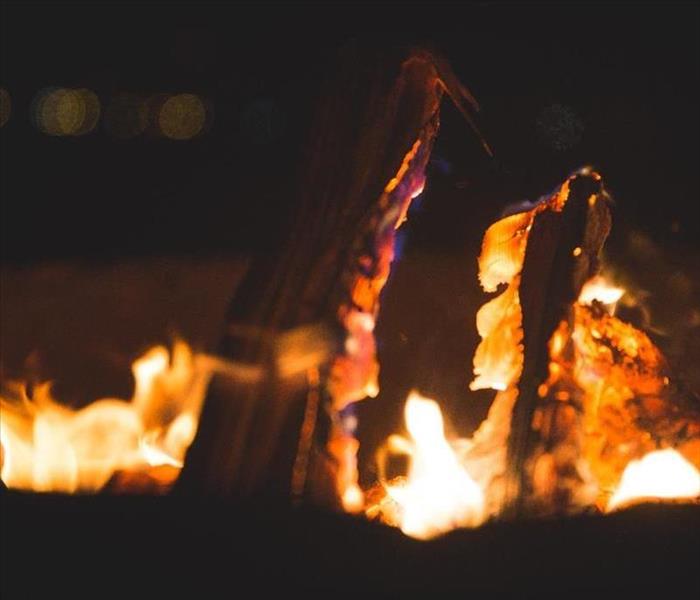Bonfire/Fireplace Best Practices
12/22/2020 (Permalink)
During the colder months, fire is a beautiful thing. Whether it’s indoors in your fireplace warming your living spaces, or outdoors bringing cheer and light to the darkness, it’s a welcome addition to this time of year. Here at SERVPRO of Huron and East Seneca Counties, we want you to be safe while you gather together with family and friends. With that in mind, we have some bonfire/fireplace best practices for you today:
FIREPLACE SAFETY
- Soot. Minimize the dangerous building up of soot and creosote by using seasoned hardwood or manufactured logs. These burn cleaner than real wood and keep you safe from chimney fires. Be sure to follow all the manufacturer recommendations, and take care to only burn wood and logs in your fireplace.
- Slow and Steady. The safest fire is a slow, steady burn. Those roaring fires look great but they can get out of control fast.
- Screens. Use a fireplace screen to keep sparks where they belong. A fire that is crackling means that sparks can be thrown out onto flammable materials, such as pillows, carpeting, and furniture. Keeping the area around the fire clear is also another good idea; don’t sit too close. Your Christmas tree should be far away, as well!
- Sleep. Never leave your fire unattended; make sure to put it out before you go to bed.
- Safety Tools. Having a carbon monoxide detector installed is a great safety step, and we know you have a fire extinguisher handy! Everyone in your home should know how to use it. The best type to have is one that weighs 2 or 5 pounds; these are designed to handle most household fires.
BONFIRE SAFETY
- Space. Bonfires should be set up at least 50 feet from the nearest building, as well as any sheds, trees, fences, or other flammable structures. Also, never build a fire under a covered porch or low hanging tree branches. Take steps to ensure that there are no cables, telephone wires, etc. above the flames before you build your bonfire.
- Surroundings. Clear all flammable materials away; there should be no dry leaves, paper, fabrics, or anything that can easily catch fire in a diameter of at least five feet around the fire.
- Set Up. Pile some rocks around the fire to prevent it from escaping; firefighters advise that your fire pit should be at least 6 inches deep at the center and 2 feet across to help keep the embers and flames contained.
- Safety. Only burn dry materials. You can use paper and a safe firestarter to light your bonfire. NEVER USE GASOLINE. Be sure you have a fire extinguisher on hand and that you know how to use it properly. A few buckets of water or sand wouldn’t be a bad idea, either.
- Size. Keep your fire at a manageable size; everyone loves a huge bonfire, but in reality, these are very dangerous. A large fire throws large sparks that can catch fire in other places before you know it.
- Seasoned Wood. Only seasoned wood should be used; burning things with polishes - such as paneling, furniture, and other such items - can give off dangerous fumes.
- Smother. When it comes time to put out the fire, make sure it is completely smothered. Once your fire has burned to ash, spread the ashes over a larger area, but don’t bury them. Pour water over charred materials until you can’t hear anymore hissing or see any smoke. Monitor the area until you are sure there is no more danger of the fire reigniting.
Here at SERVPRO of Huron and East Seneca Counties, your safety is one of our primary concerns. If your home or business experiences damage that comes from fire, you can count on us to be there right away to help you recover. We handle water damage and mold remediation and we can get your premises Certified: SERVPRO Cleaned, too! Ask us how.






 24/7 Emergency Service
24/7 Emergency Service
